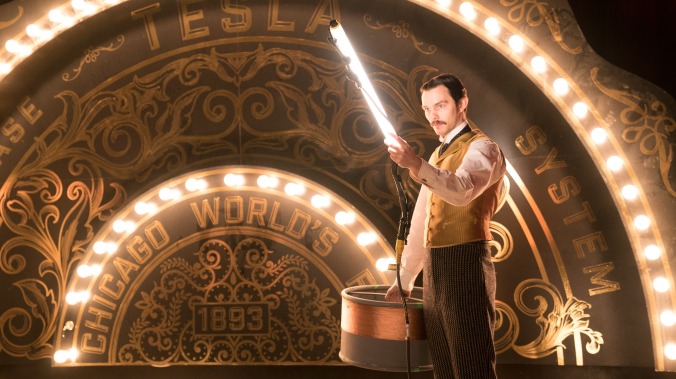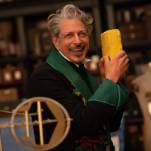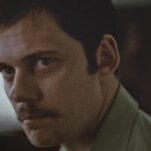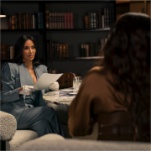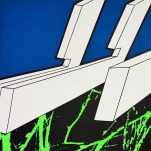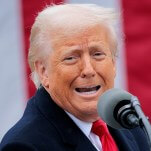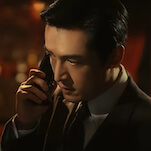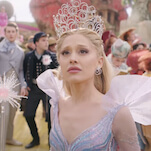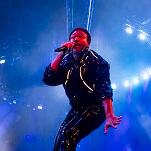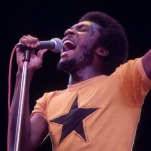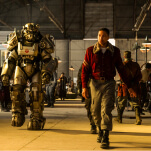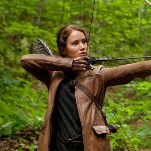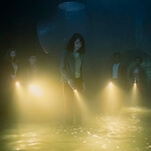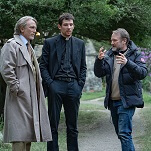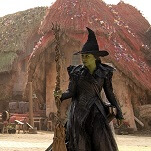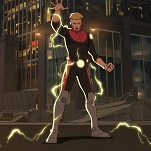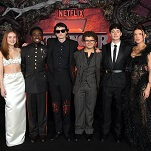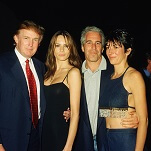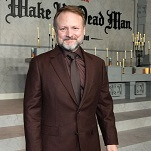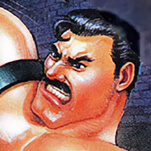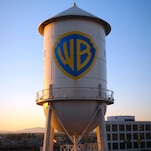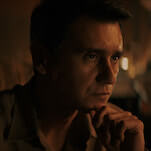Although The Current War is not an unearthed relic from the innocent days of four years ago, that’s not so far off. The movie originally premiered at the Toronto Film Festival in 2017, ahead of a planned awards-season release from the Weinstein Company. A few weeks and one New York Times bombshell later, the company was all but gone, and the movie’s release date sat in the wreckage. It’s finally opening in North America with an advertised Director’s Cut subtitle, and without the involvement of indicted producer Harvey Weinstein. Somewhat confusingly, given Weinstein’s reputation as an editing-room meddler always pushing for a truncated version, this cut runs 10 minutes shorter, though it does include additional newly shot scenes.
At the very least, the relatively compact running time prevents The Current War from bogging down in tedious origin stories. The movie opens with Edison already famous, preparing for a demonstration of his direct current (DC) electrical system in lower Manhattan. While making the rounds to drum up interest and financing, he wearily decides to snub a dinner with Westinghouse and his wife, Marguerite (Katherine Waterston), which in the movie’s telling raises the ire of an otherwise mild-mannered fellow. Westinghouse pursues an alternating current (AC) system, cheaper and more adept across great distances—claiming, in a passive-aggressive businessman sort of way, a simple interest in improving efficiency.
Edison, meanwhile, sacrifices some of his principles in order to smear Westinghouse’s AC electricity as potentially deadly. Back and forth they go, racing toward the opportunity to light up the Chicago World’s Fair in 1893, and accidentally getting involved in the evolution of the death penalty along the way. The movie takes place over about 13 years, and struggles to depict the passage of time organically, or sometimes at all. Even the standard biopic familial neglect feels itself neglected. One strange compression has a supporting character receive a scary medical diagnosis and then die tragically within what seems like 24 hours.
The movie feels tonally compressed, too, squeezed together from a variety of odd sources. The obsessive one-upmanship brings to mind Christopher Nolan’s The Prestige, a more flagrantly fictional story that also folded the exploits of Tesla into its narrative. Edison’s snarky ripostes (his job self-description: “I fix problems for idiots”) recall not just past Cumberbatch roles but Aaron Sorkin’s play The Farnsworth Invention, which also addressed an innovator’s clashes with an enormous corporation. But Nolan and Sorkin have distinctive and immediately recognizable directing and writing styles. Gomez-Rejon, for his part, appears to be seeking recognition based on sheer volume. The Current War may be the most unproductively stylized movie of 2019 and 2017. Me And Earl had plenty of flourishes, but they more or less fit the referential, show-offy, youthful energy of the material. Here, the camerawork of cinematographer Chung Chung-hoon (who also shot Earl, in addition to most of Park Chan-wook’s work) is even more ostentatious, whether it’s doing an unbroken lap around a train car, capturing elaborate overhead shots, or employing fish-eye lens for a simple back-and-forth dialogue scene.
The Current War employs actors capable of their own eccentric stylizations, and gives them very little leeway to make the material their own. Gomez-Rejon keeps snatching it back with every offbeat composition idea he can muster. These shots generate some moment-to-moment sensation—unlike so many of its biopic predecessors, this is not a boring movie to look at—but turn the characters into posable historical action figures. Cumberbatch and Shannon are still charismatic performers, and it’s especially enjoyable to see the latter go quiet, even gentle, in a part that could have been brimmed over with affectation. Gomez-Rejon evinces a generous view of his multiple subjects and avoids the simplicity of a hero-villain clash. But given how much interesting material he generates from the death penalty associations alone, The Current War ultimately feels like it may be going too easy on both parties. The movie wants very much to look at the past as a window to the future, but not as much as it wants to look at everything from endlessly, fussily canted angles.
